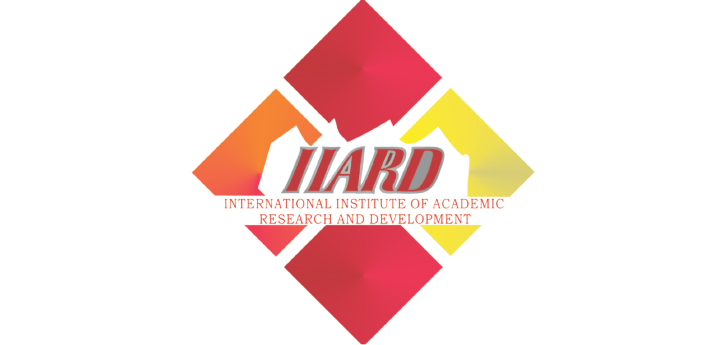The New School Principal: Leadership, Management Skills and Organisational Climate. An Experimental Study in Three Schools in Campania
Davide Di Palma, Fabiola Palmiero, Giovanni Tafuri
Abstract
In recent years, the role of the school head has changed profoundly, evolving from an administrative figure to an educational leader with managerial and relational skills. This experimental study, conducted in six schools in Campania, analyses the impact of leadership on organisational climate and human resources management. Using a mixed approach, quantitative (KPIs and organisational climate scales) and qualitative (semi-structured interviews) instruments were employed. The results show how a transformational and participative leadership style fosters cohesive, inclusive and improvement-oriented working environments. Practices of transparent communication, empowerment and collaborative management are fundamental to organisational well-being and educational quality. The study emphasises the importance of stable and structured training courses for school leaders.
Keywords
References
Schools for Improvement: Lessons from Chicago. University of Chicago Press.
Bush, T., & Glover, D. (2014). School leadership models: What do we know? School
Leadership & Management, 34(5), 553–571.
Conger, J. A., & Kanungo, R. N. (1988). The empowerment process: Integrating theory and
practice. Academy of Management Review, 13(3), 471–482.
Datnow, A., & Park, V. (2018). Professional Collaboration with Purpose: Teacher Learning
Toward Equitable and Excellent Schools. Routledge.
Day, C., Gu, Q., & Sammons, P. (2016). The impact of leadership on student outcomes: How
successful school leaders use transformational and instructional strategies. Educational
Administration Quarterly, 52(2), 221–258.
Fullan, M. (2014). The Principal: Three Keys to Maximizing Impact. Jossey-Bass.
Fullan, M., & Hargreaves, A. (2013). The power of professional capital. Journal of Staff
Development, 34(3), 36–39.
Grissom, J. A., Egalite, A. J., & Lindsay, C. A. (2021). How principals affect students and
schools: A systematic synthesis of two decades of research. The Wallace Foundation.
Hallinger, P. (2011). Leadership for learning: Lessons from 40 years of empirical research.
Journal of Educational Administration, 49(2), 125–142.
Hargreaves, A., & Fink, D. (2006). Sustainable Leadership. Jossey-Bass.
Hargreaves, A., & Fullan, M. (2012). Professional Capital: Transforming Teaching in Every
School. Teachers College Press.
Herzberg, F. (1966). Work and the Nature of Man. World Publishing Company.
Kouzes, J. M., & Posner, B. Z. (2012). The Leadership Challenge: How to Make Extraordinary
Things Happen in Organizations. Jossey-Bass.
Leithwood, K., & Jantzi, D. (2006). Transformational school leadership for large-scale reform:
Effects on students, teachers, and their classroom practices. School Effectiveness and
School Improvement, 17(2), 201–227.
Leithwood, K., & Seashore-Louis, K. (2012). Linking Leadership to Student Learning. Jossey-
Bass.
Litwin, G. H., & Stringer, R. A. (1968). Motivation and Organizational Climate. Harvard
Business School.
Louis, K. S., Leithwood, K., Wahlstrom, K. L., & Anderson, S. E. (2010). Learning from
Leadership: Investigating the Links to Improved Student Learning. The Wallace
Foundation.
Marzano, R. J., Waters, T., & McNulty, B. A. (2005). School Leadership That Works: From
Research to Results. ASCD.
Maslach, C., & Jackson, S. E. (1981). The measurement of experienced burnout. Journal of
Organizational Behavior, 2(2), 99–113.
Maslach, C., & Leiter, M. P. (1997). The Truth About Burnout: How Organizations Cause
Personal Stress and What to Do About It. Jossey-Bass.
Murphy, J. (2016). Creating Productive Cultures in Schools: For Students, Teachers, and
Parents. Corwin Press.
Northouse, P. G. (2018). Leadership: Theory and Practice (8th ed.). Sage Publications.
OECD. (2020). School Leadership for Learning: Insights from TALIS 2018. OECD Publishing.
Pont, B., Nusche, D., & Moorman, H. (2008). Improving School Leadership, Volume 1: Policy
and Practice. OECD Publishing.
Robinson, V. M. J., Lloyd, C. A., & Rowe, K. J. (2008). The impact of leadership on student
outcomes: An analysis of the differential effects of leadership types. Educational
Administration Quarterly, 44(5), 635–674.
Sergiovanni, T. J. (1996). Leadership for the Schoolhouse: How Is It Different? Why Is It
Important?. Jossey-Bass.
Spector, P. E. (1997). Job Satisfaction: Application, Assessment, Causes, and Consequences.
Sage Publications.
Spillane, J. P. (2005). Distributed leadership. The Educational Forum, 69(2), 143–150.
Spreitzer, G. M. (1995). Psychological empowerment in the workplace: Dimensions,
measurement, and validation. Academy of Management Journal, 38(5), 1442–1465.
Timperley, H. (2005). Distributed leadership: Developing theory from practice. Journal of
Curriculum Studies, 37(4), 395–420.

